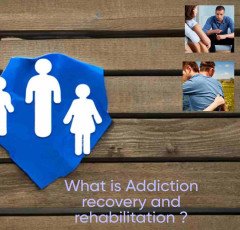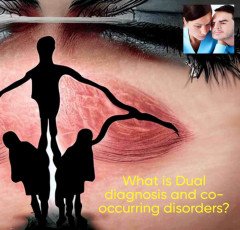
What is Harmful effects of secondhand smoke and vaping ?

Both secondhand smoke and e-cigarette use can be dangerous to those who are exposed to them. These are a some of the possible risks:
Smoke that is exhaled by a smoker or that originates from the burning end of a cigarette is known as secondhand smoke.
More than 7,000 compounds are present in it, at least 70 of which are recognized carcinogens. Numerous health issues, including as lung cancer, heart disease, stroke, respiratory infections, and asthma episodes, can be brought on by exposure to secondhand smoking. Children and newborns who are exposed to secondhand smoke are also more likely to develop respiratory illnesses, ear infections, and SIDS.
Inhaling an aerosol (often referred to as vapor) created by an electronic cigarette or other vaping device is known as vaping. Nicotine, heavy metals, and carcinogens are just a few of the dangerous substances that the aerosol may contain. According to several research, secondhand e-cigarette vapor exposure can result in the same health issues as secondhand smoke, such as lung cancer, heart disease, and respiratory issues. The potential for long-term consequences of vaping, such as addiction, lung damage, and other health issues, is also a major source of concern.
In order to protect yourself and others from potential injury, it is best to limit your exposure to both secondhand smoke and vaping.
Secondhand smoke exposure and vaping can have various negative effects in addition to potential health problems. Here are a few instances:
Social stigma:
People who are exposed to their secondhand smoke or vapor may perceive them as disrespectful or uncaring when they smoke or vape in public. In social settings, this could lead to conflict and friction.
Reduced air quality:
Both passive smoking and e-cigarette use can cause indoor and outdoor air pollution, which can be dangerous for everyone nearby. Additionally, cigarette smoke residue can accumulate on textiles and surfaces, giving off an unpleasant odor and perhaps exposing people to dangerous chemicals.
Financial costs:
Health issues brought on by exposure to secondhand smoke and e-cigarettes can increase individual and societal healthcare costs. Furthermore, smokers and vapers could spend a lot of money on their habits, which could be expensive for them and their family.
Establishing smoke-free and vape-free environments is crucial for minimizing the negative impacts of secondhand smoke and vaping, especially in public places, workplaces, and households. Campaigns for education and awareness can also serve to increase public understanding of the possible risks associated with secondhand smoke and e-cigarette use and motivate people to give up smoking and e-cigarette use.
Here are some other suggestions for lowering exposure to vaping and secondhand smoke:
Avoid areas where smoking or vaping is permitted:
If you are in a public area where smoking or vaping is permitted, attempt to leave the area or, if feasible, find a smoke-free or vape-free environment.
Promote quitting smoking:
If you know someone who smokes or uses vaporizers, motivate them to stop. Provide assistance and resources, such as nicotine replacement therapy or programs to help people stop smoking.
Adopt smoke-free policies:
If you are a landlord or employer, you might want to adopt smoke-free rules for your rental premises. This can shield nonsmokers from the negative effects of cigarette smoke and vaporizers.
Promote smoke-free and vape-free surroundings by supporting programs and laws that encourage these conditions in your neighborhood. This can involve encouraging smoke-free homes, supporting smoke-free outdoor areas, and fighting for smoke-free and vape-free public places like schools.
We can guard ourselves and others against harm by taking action to lessen exposure to secondhand smoke and vaping, and we can improve the settings in which we all live.
Here are some additional strategies for reducing your own smoking or vaping habits:
Seek assistance:
If you smoke or vape and wish to stop, ask friends, family, or medical personnel for assistance. Counseling, nicotine replacement treatment, and other tools are also beneficial.
Decide on a date and stick to it to stop smoking or using vaping. This may aid in maintaining your motivation and goal-focused attention.
Recognize your triggers and devise coping mechanisms for the situations or feelings that make you want to smoke or vape. Try relaxation techniques, such as deep breathing or meditation, for instance, if stress is a trigger.
Stay away from persons or situations that could tempt you to smoke or vape. Avoid alcohol and other substances that can weaken your guard and make you more likely to smoke or vape, if required.
Celebrate your accomplishments, no matter how minor, along the journey. This can aid in your motivation and focus as you work toward your goal of giving up smoking or vaping.
You may improve your own health and lessen the harm that secondhand smoke and vaping bring to people around you by taking efforts to stop smoking or vaping.
Here are some extra measures you may take as a parent or caregiver to shield kids and newborns from the negative effects of secondhand smoking and vaping:
Those who wish to learn more about the negative consequences of secondhand smoke and vaping or who want to give up smoking or vaping may find the following resources useful:
Centers for Disease Control and Prevention (CDC):
The CDC offers resources to assist people in quitting smoking or vaping as well as information on the health implications of secondhand smoke and vaping.
American Lung Association:
The American Lung Association provides information on the negative effects of secondhand smoke as well as tools and help for people who want to stop smoking or vaping.
Smokefree.gov:
Smokefree.gov offers free, evidence-based materials and tools, such as a step-by-step quit guide, a quit plan builder, and a mobile app, to help smokers stop smoking.
National Cancer Institute (NCI):
The NCI provides services to assist smokers in quitting smoking as well as information on the health implications of secondhand smoke and vaping.
Many states have a free telephone-based service called a "quitline," which offers tools and support to help smokers give up the habit.
By using these tools, you can acquire the encouragement and knowledge you need to stop smoking or vaping and safeguard both yourself and others from the negative impacts of these practices.
Both cigarette smoking and vaping can be dangerous to smokers and non-smokers.
Lung cancer, heart disease, and stroke are just a few of the health issues that secondhand smoking exposure might make you more susceptible to. Aerosols from secondhand vaping can irritate the respiratory system and have other negative health effects.
We may take precautions to lessen our exposure and safeguard others from secondhand smoke and vaping in order to lessen their negative impacts. Additionally, we may lead by example by taking efforts to stop smoking or vaping for ourselves.
We may enhance the health and wellbeing of ourselves and those around us by cooperating to create smoke-free and vape-free settings and assisting individuals who wish to give up smoking or vaping.
It should be noted that quitting smoking or vaping is difficult and may take several tries.
The health advantages of quitting, however, are substantial and can include a decreased risk of cancer, heart disease, and other conditions. It's never too late to stop, and those who do can get help.
The health of our communities can be improved by establishing smoke-free and vape-free zones.
Policies that prohibit smoking and vaping can lessen exposure to these substances, encourage healthy habits, and foster a more positive and supportive environment for all.
We can improve our own health and the health of those around us by taking efforts to lessen our exposure to secondhand smoke and vaping, quitting smoking or vaping ourselves, and supporting smoke-free and vape-free workplaces.
It should be noted that secondhand smoke and vaping have negative impacts other than those on one's physical health.
Particularly for children and teenagers, exposure to secondhand smoke and vaping can have detrimental consequences on mental health and wellbeing. According to studies, secondhand smoking and vaping exposure can raise one's chance of developing anxiety, depression, and other mental health conditions.
Therefore, establishing smoke-free and vape-free environments is crucial for everyone's health, including their mental and emotional wellbeing. We can enhance the health and wellbeing of ourselves and those around us by cooperating to encourage healthy behaviors and build supportive settings.
Both secondhand smoke and vaping have detrimental impacts that can have an ongoing negative impact on one's health and wellbeing. However, we can improve both our own health and the health of others around us by taking proactive measures to decrease our exposure and support healthy behaviors.
Always keep in mind that stopping smoking or vaping, as well as building settings free from both, require not only individual actions, but also group efforts from communities and society as a whole. It has been demonstrated that programs and activities that support smoke-free and vape-free environments, such as tobacco and e-cigarette product regulation, smoke-free regulations, and tobacco and e-cigarette levies, are successful in lowering tobacco and e-cigarette usage and exposure.
So that we may support the health and welfare of our communities, we can also push for laws and programs that encourage smoke- and vape-free areas. Together, we can make the world a better place for both current and upcoming generations.
Absolutely. It's critical to realize that everyone—individuals, communities, and policymakers—must work together to create smoke- and vape-free settings. We may push for legislation that encourage smoke-free and vape-free environments and safeguard everyone's health and wellbeing in addition to encouraging healthy behaviors and stopping smoking or vaping.
Examples of laws that have been successful in lowering exposure to tobacco and vapor include:
Regulation of tobacco and e-cigarette products can assist lower exposure to and use of tobacco and e-cigarettes, particularly among young people. Examples of such regulations include age restrictions, flavor bans, and warning labels.
Smoke-free legislation: Smoke-free legislation, which forbids smoking in public and commercial spaces, has been found to lessen secondhand smoke exposure and enhance health outcomes.
Taxes on tobacco and e-cigarettes can raise the price of these items, which in turn discourages use and exposure.
Campaigns for education and public awareness can help spread the word about the dangers of smoking and vaping, as well as encourage healthier lifestyle choices.
We can have a positive impact on the health and wellbeing of our communities by supporting these policies and programs and cooperating to create smoke-free and vape-free surroundings.
Whether it is through our own actions, community activities, or advocacy for policy, we can all contribute to the promotion of smoke-free and vape-free surroundings. Together, we can make the world a better place for both current and upcoming generations.
We may encourage research and innovation to create fresh and efficient interventions for tobacco and vaping cessation and prevention in addition to lobbying for laws that enable smoke-free and vape-free surroundings. Creating novel drugs, behavioral therapies, and other tools to aid people in quitting smoking or vaping and preventing tobacco and vaping use among youth can all fall under this category.
Those who are trying to give up smoking or vaping can get our help and encouragement.
It can be challenging to stop smoking, so some people may want support and encouragement to do so. Through quitlines, counseling services, or support groups, we may offer folks who are trying to stop resources and support.
Environments free from smoking and vaping must be created by individuals, communities, and policymakers working together. We may have a positive effect on our own health and the health of others around us by supporting initiatives that support smoke-free and vape-free settings, encouraging research and innovation, and offering tools and assistance to individuals who are attempting to give up smoking or vaping.
It should be noted that establishing smoke-free and vape-free workplaces promotes fairness and social justice in addition to physical wellness. Low-income people, those with mental illnesses, and communities of color are among the marginalized and vulnerable communities that are disproportionately impacted by tobacco and vaping usage.
As a result, initiatives to create smoke-free and vape-free workplaces must also focus on eradicating social injustice and addressing the underlying causes of health disparities. The social determinants of health, such as discrimination and poverty, can be addressed in this way, and efforts can be made to guarantee that everyone has access to the tools and support they need to stop smoking or vaping and lead healthy lives.
The goal of establishing smoke- and vape-free spaces is to advance more than simply physical health.
Additionally, addressing the underlying causes of health disparities and fostering equity and social justice are important. We can make the world a healthier and more equitable place for everyone if we all work together to create surroundings that are encouraging and encourage healthy behaviour.















 Kitchen Daily Use
Kitchen Daily Use  SEO Checklist
SEO Checklist  Smart Doorbell
Smart Doorbell  Online Technology Classes
Online Technology Classes  Door Handle Collection
Door Handle Collection  Apple iPhone
Apple iPhone  4k Projector For Home
4k Projector For Home  NordLocker
NordLocker  Air Purifier for Home
Air Purifier for Home  Dell Laptop
Dell Laptop  Smart Watches
Smart Watches  Graphics & Design
Graphics & Design  Women Fashion
Women Fashion  Sennheiser
Sennheiser  Best Phone
Best Phone  ELECTRONIC ACCESSORIES
ELECTRONIC ACCESSORIES  RPM 3.0
RPM 3.0  Only For The United States
Only For The United States  Home Decor Items
Home Decor Items  NordVPN
NordVPN  Favorite Company (Cuelinks)
Favorite Company (Cuelinks)  Unlimited access to classes on illustration, photography, design, film, music
Unlimited access to classes on illustration, photography, design, film, music  Artificial Intelligence
Artificial Intelligence  BEST SELLER TOP10
BEST SELLER TOP10  Best Selling Books
Best Selling Books  ASPINAL LONDON
ASPINAL LONDON  Wireless Bluetooth Earphones
Wireless Bluetooth Earphones  HP Laptop
HP Laptop  Unreal Engine 5 For Beginners Learn The Basics Of Virtual Production
Unreal Engine 5 For Beginners Learn The Basics Of Virtual Production  SOFAS
SOFAS  One World Collection
One World Collection  Best Sellers On Amazon
Best Sellers On Amazon  Wristbands
Wristbands  Healthy Ingredients
Healthy Ingredients  Realme Smart Phone
Realme Smart Phone  LCD Writing Tablet
LCD Writing Tablet  Amazon Best Selling Products
Amazon Best Selling Products  Dual USB Car Charger
Dual USB Car Charger  Motion Sensor Light
Motion Sensor Light  ASUS Laptop
ASUS Laptop  Kitchen Tap
Kitchen Tap  Hanging Lights For Living Room
Hanging Lights For Living Room  Online Marketing
Online Marketing  Adidas Shoes
Adidas Shoes  Samsung Mobile
Samsung Mobile  Hot Bags For Pain Relief
Hot Bags For Pain Relief  Best Home Appliances
Best Home Appliances  Duke T Shirts
Duke T Shirts  Crocs
Crocs  1150+Trendy kids coloring pages Bundle
1150+Trendy kids coloring pages Bundle  Stylish Sneakers by Red Tape
Stylish Sneakers by Red Tape  TitTok Revolution
TitTok Revolution  Echo Dot - Smart speaker with Alexa
Echo Dot - Smart speaker with Alexa  Essentials for Gamers
Essentials for Gamers  Prime Video
Prime Video  Puma (Clothing & Accessories)
Puma (Clothing & Accessories)  Top Rated From Amazon
Top Rated From Amazon  Hello Theme
Hello Theme  Wall Lamp
Wall Lamp  Rakhi
Rakhi  iPhone cable
iPhone cable  The Click Engine
The Click Engine  Men Clothing
Men Clothing  All Wireless Products
All Wireless Products  NordPass
NordPass  Pet Care Products
Pet Care Products  The Secret Email System
The Secret Email System  Digital Voice Recorder
Digital Voice Recorder  Bathroom Mirrors
Bathroom Mirrors  Creative Brief For Video Shoot
Creative Brief For Video Shoot  Acer Laptop
Acer Laptop  Wireless Gaming Mouse
Wireless Gaming Mouse  Best Robotic Vacuum Cleaners
Best Robotic Vacuum Cleaners 


















